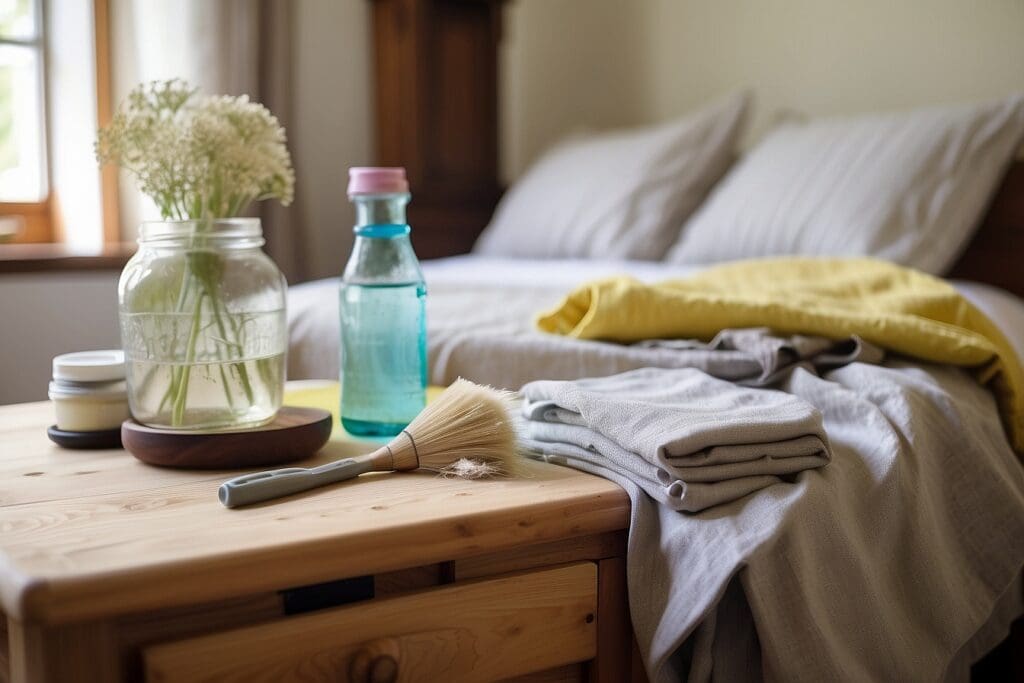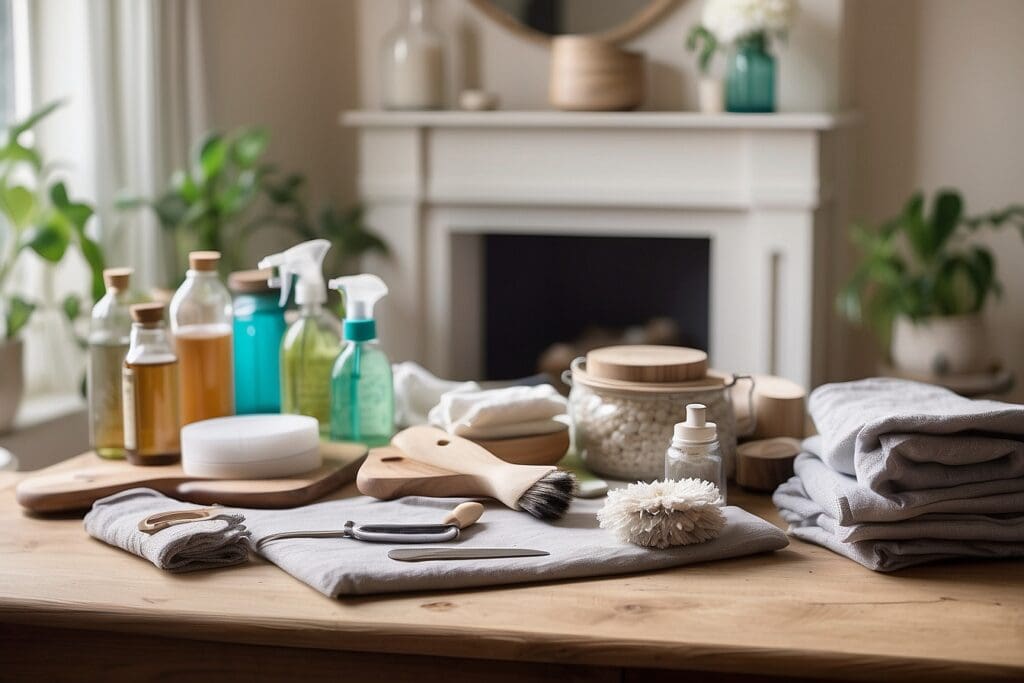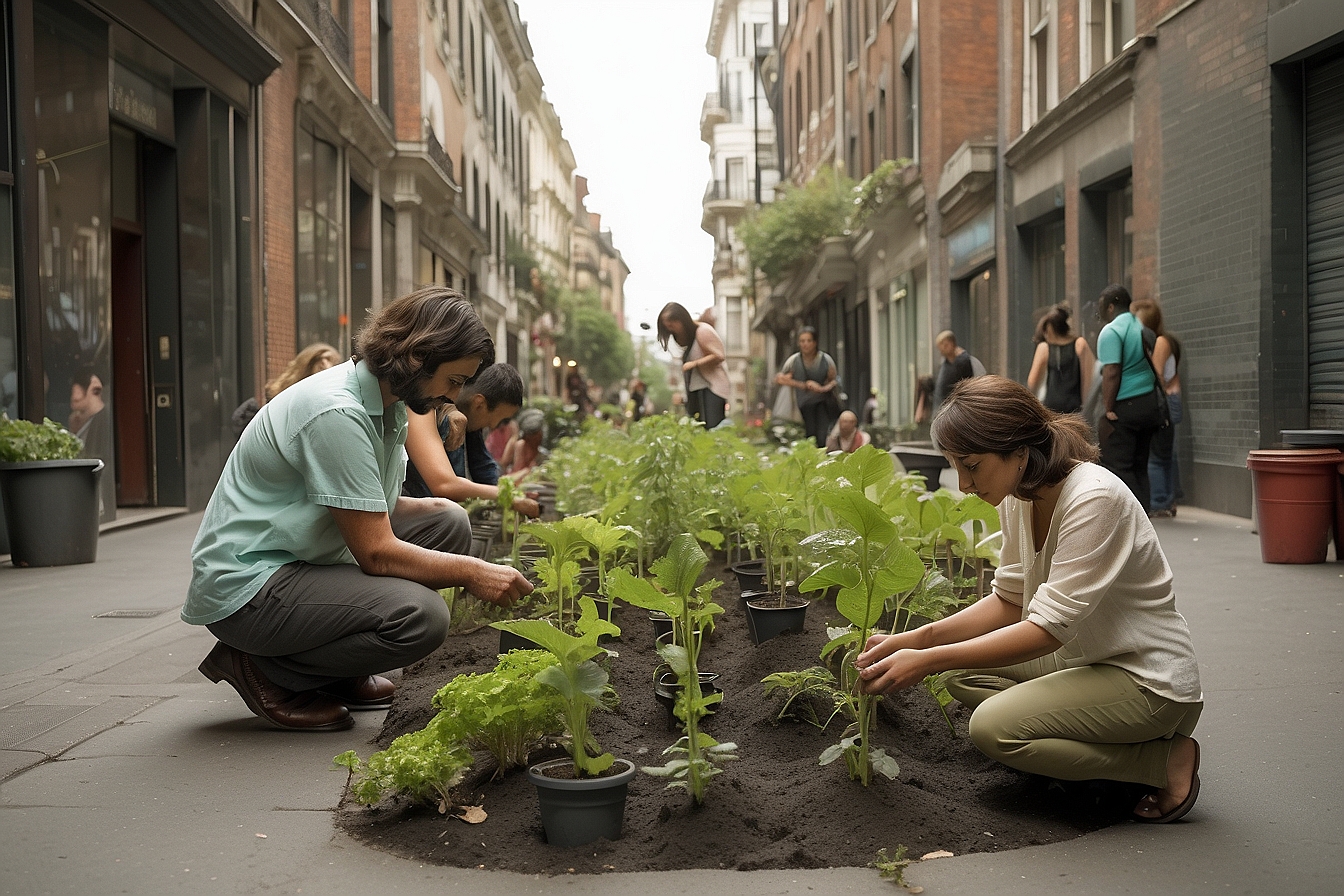A friend once told me, “I want to live a simple life, but it’s so complicated!”
Learning new habits takes time, because it’s not just doing something a new way, it’s thinking differently as well. A mundane task—like cleaning the house—suddenly requires more brainpower.

Speaking of new habits, recently I switched to milder, less-toxic household cleaning products to reduce my family’s exposure to scary chemicals. Marketing messages for today’s commercial products shout that the only good germ is a dead germ! But average American homes don’t need to be as sterilized as the Centers for Disease Control. Some commercial cleaners disinfect with the use of hazardous chemical irritants that require warning labels and safe disposal instructions. Popular antibacterial formulas cost more and kill normally-occurring bacteria indiscriminately; even the beneficial bacteria that help prevent disease. Might they be doing more harm than good?
Homemade cleaning products are gentler, and in most cases, just as effective as using the store brands; they use cheap and natural ingredients such as vinegar, baking soda, borax, rubbing alcohol and olive oil. Some are so mild they can be eaten.
Mixing up my own cleaners seemed cumbersome at first. However, most homemade solutions require only a few ingredients. Some ingredients go solo: for instance, I can use undiluted white vinegar as a fabric softener, a toilet bowl cleaner, a mildew remover, and to remove scale from my shower head. I can use baking soda to scour sinks, unclog slow drains and absorb odors in the refrigerator. Tried and true tips for homemade cleaners have been around for years and are widely available in books, magazines, and on the internet. The newspaper column “Hints from Heloise” has always featured thrifty homemade cleaning solutions. You can find links at http://www.heloise.com/.
Starting a new habit takes time and a little work up front. For convenience and to help me remember what to use when, I wrote recipes and tips on 3×5 cards and pinned them to a bulletin board above my utility sink. I carefully disposed my leftover commercial cleaners. Since some commercial products do contain toxic materials, I didn’t want to pitch them. Landfills and local watersheds are no place for these substances. My local solid waste management program’s website has a convenient guide to safe disposal of household chemicals (www.recycleyourtrash.org). I rinsed out my left-over plastic spray bottles to refill with my new homemade solutions—but I checked those labels, too, to make sure it was safe to re-use them.
Some big brands have responded to customer preferences for gentler cleaners and now make plant-based formulas such as Clorox’s Green Works line. Not all “natural” brands list all their ingredients, though. Brands such as Ecover and Seventh Generation offer a wide array of products and they are completely transparent about their ingredients (they are available on the web and at some big box stores, such as Target and Walmart).
It feels empowering to say “no” to cleaning products that come with a heavy cost for my family and for the planet. Here are a few recipes if you’d like to make your own solutions:
Recipe for an All-Purpose Cleaner
Mix in a spray bottle: ½ cup of white vinegar and ¼ cup of baking soda (or 2 teaspoons borax) plus a ½ gallon of water. Use for showers, chrome, windows, mirrors, and other surfaces. (Source: http://www.eartheasy.com/live_nontoxic_solutions.htm).
Recipe for a Homemade Glass Cleaner
Mix in a spray bottle: 1 cup of rubbing alcohol, 1 cup of water, and 1 tablespoon of white vinegar. (Source: http://www.sideroad.com/Budgeting/homemade-cleaners.html).





